Up Next

Michael Schumacher no longer holds the record for the most Formula 1 victories, and who knows where Lewis Hamilton will get to over the rest of his career.
At the time of writing, 96% of respondents to a poll on The Race YouTube channel expect Hamilton to reach at least 100 victories – as does Max Verstappen, who believes Hamilton will score “well over” 100.
Could Schumacher have reached three figures? We reckon so, and we’ve gone back through his time in F1 to pick out nine lost victories that stopped him getting to a century of wins.
Here are those races in chronological order.
1993 Monaco GP
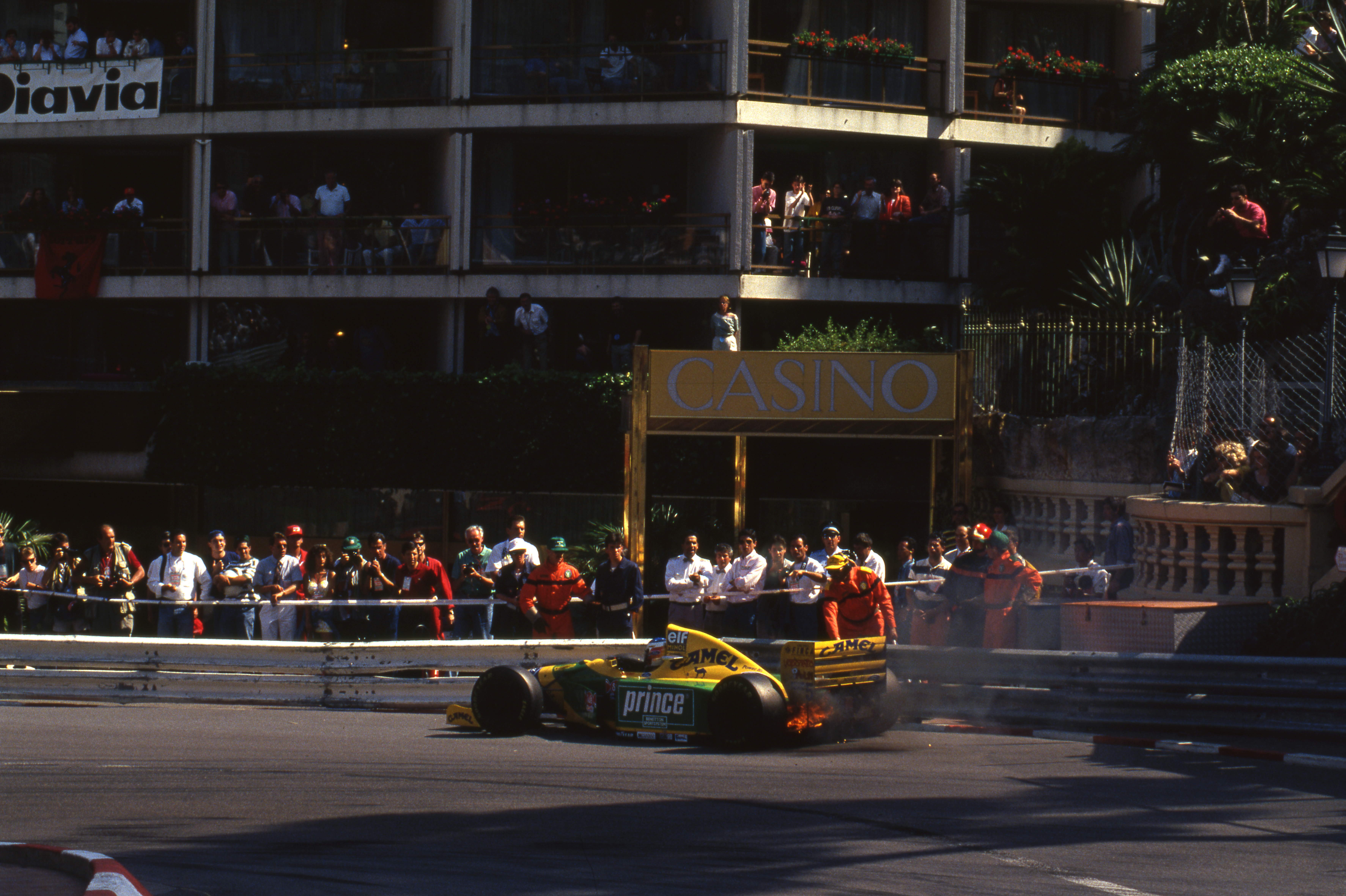
Ayrton Senna’s sixth and final victory in the Principality should have been Schumacher’s first there.
Schumacher comfortably out-qualified Senna to line up on the front row of the grid alongside Alain Prost in the dominant Williams, and in the early stages of the race he and Prost shot away into the distance, leaving Senna’s McLaren behind.
Schumacher then inherited the lead when Prost was forced to serve a penalty for jumping the start. In the days before jump starts were measured electronically, Prost felt the 10-second stop/go, which was compounded by him stalling twice when trying to rejoin the race, was “severe”. But it left Schumacher comfortably in charge of the race.
Schumacher’s lead over Senna – who said he was saving his tyres for later in the race, and admitted to struggling to find the limit around Monte Carlo following a heavy crash in practice – was 15 seconds before hydraulic failure put him out of the race after 32 laps, leaving the way clear for Senna to take his third win of the season.
1994 Spanish GP
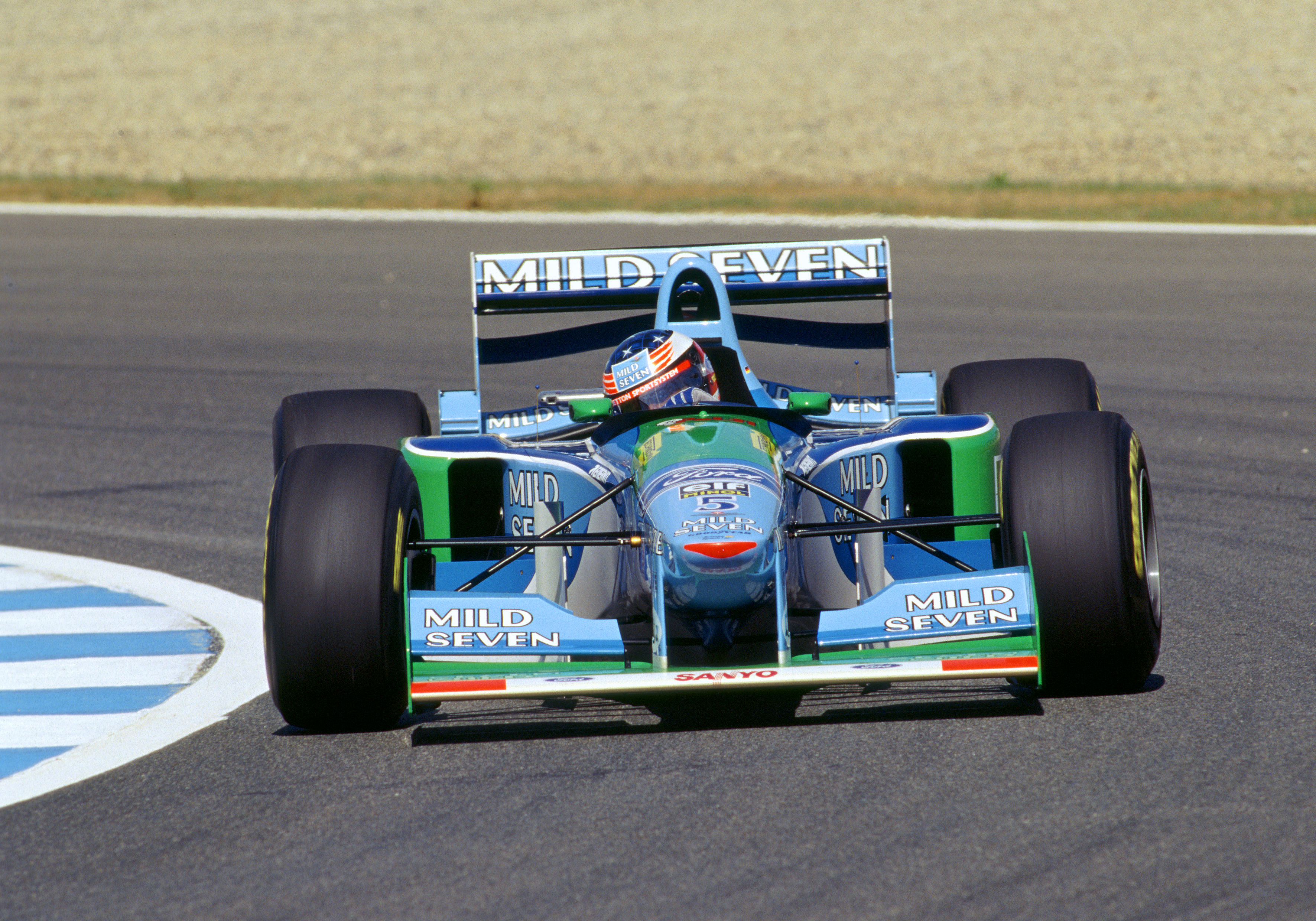
Schumacher had control of the 1994 Spanish Grand Prix until after his first pitstop, when he rejoined the race and got stuck in fifth gear.
But what should have been a problem that led to retirement in fact set the scene for one of his greatest drives.
Over the laps that followed, Schumacher learned how to keep the Benetton running competitively, somehow going quick enough to finish second behind race winner Damon Hill.
He was perhaps a little fortunate that Mika Hakkinen’s Peugeot engine blew up just as the McLaren was closing in after its final pitstop, but even a third place would have been a miraculous achievement.
Even more impressively, Schumacher managed to complete another pitstop with the problem, somehow pulling away from a standstill in fifth gear!
“Finishing second today – with the gearbox problems I had for a large part of the race – is as good as a win,” he said. “I don’t know exactly what happened, and with so many laps still to go, I never imagined I would be able to finish second. It took me a while to learn to drive the car like this and I was eventually able to find the best line through the corners without losing too much time. Really, quite an incredible result.”
Hill’s victory was an emotional one for Williams, coming just two races after the death of Ayrton Senna at Imola. “This was the best medicine,” Hill said at the time, “it was what everyone at Williams needed.”
1994 Belgian GP
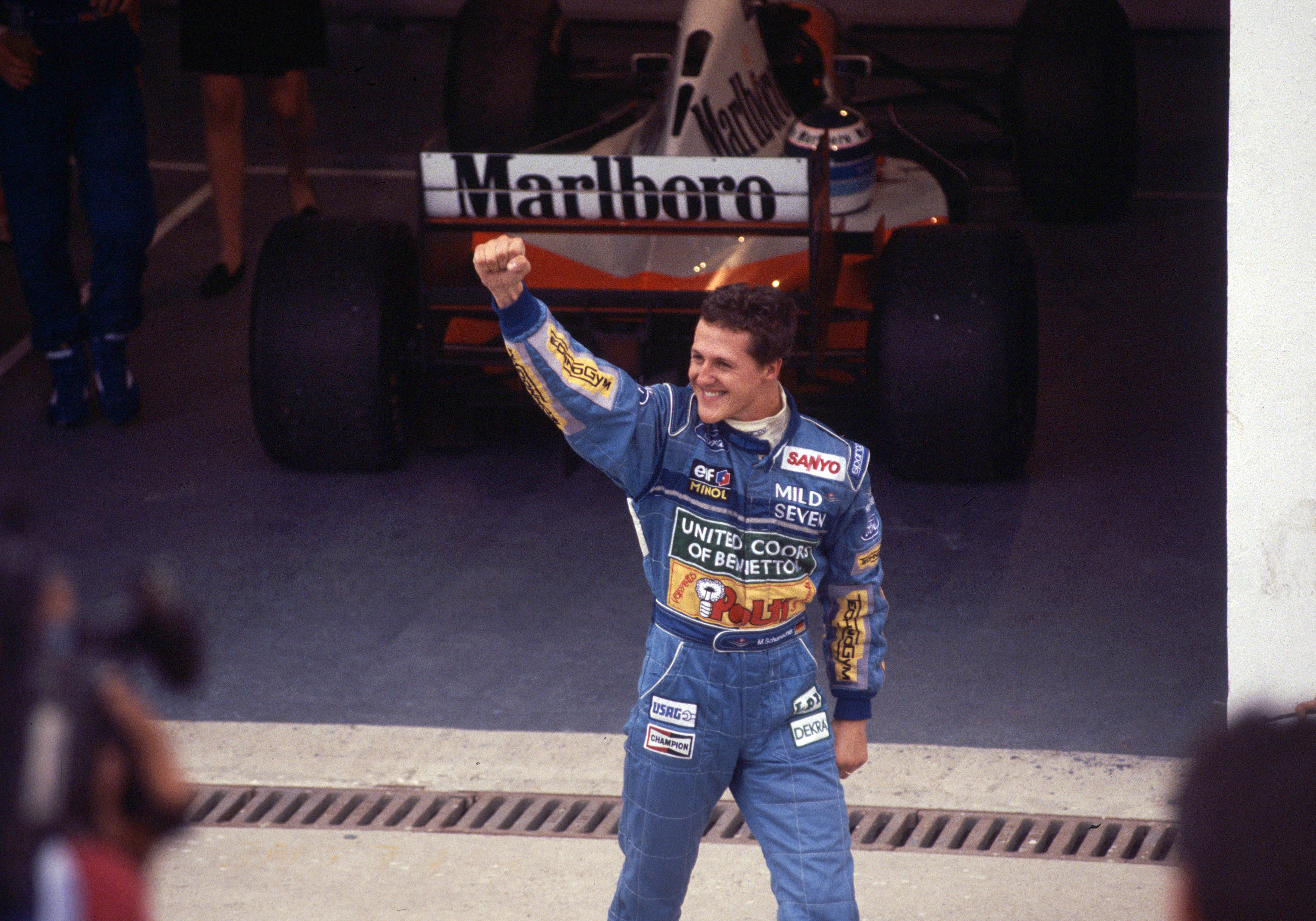
Schumacher won the 1994 Belgian Grand Prix comfortably, but this was the only time in his career he had a victory taken away after the race.
The plank under his Benetton was found to be more worn than was permitted by the regulations, suggesting the car had been running under the ride height limit, and Schumacher was excluded.
Benetton offered several possible theories to the stewards afterwards to try to explain the excessive wear on the plank. The team said Schumacher’s car was suffering from “technical problems” later in the race, and it provided laptime data showing a drop in pace because of this.
It also said the damage to the plank was probably the result of Schumacher spinning over a kerb during the race, but the FIA technical delegate found that the damage from the kerb was in a different part of the plank, and the wear in that area was not consistent with the part that was in breach of the regulations.
The investigation went as far as checking around that kerb for evidence of parts of the plank having been shaved off, but the stewards’ report said “no piece of wood could be found either on the top or at the side of the relevant kerb”.
The stewards concluded “that not one of the defences offered is acceptable” and therefore Schumacher was excluded.
Hill inherited the win, and Schumacher sat out the next two races – which we’ve chosen not to include on this list – to serve a ban he’d picked up earlier in the season at the British Grand Prix for initially ignoring a black flag he was shown for overtaking Hill on the formation lap.
1998 Belgian GP
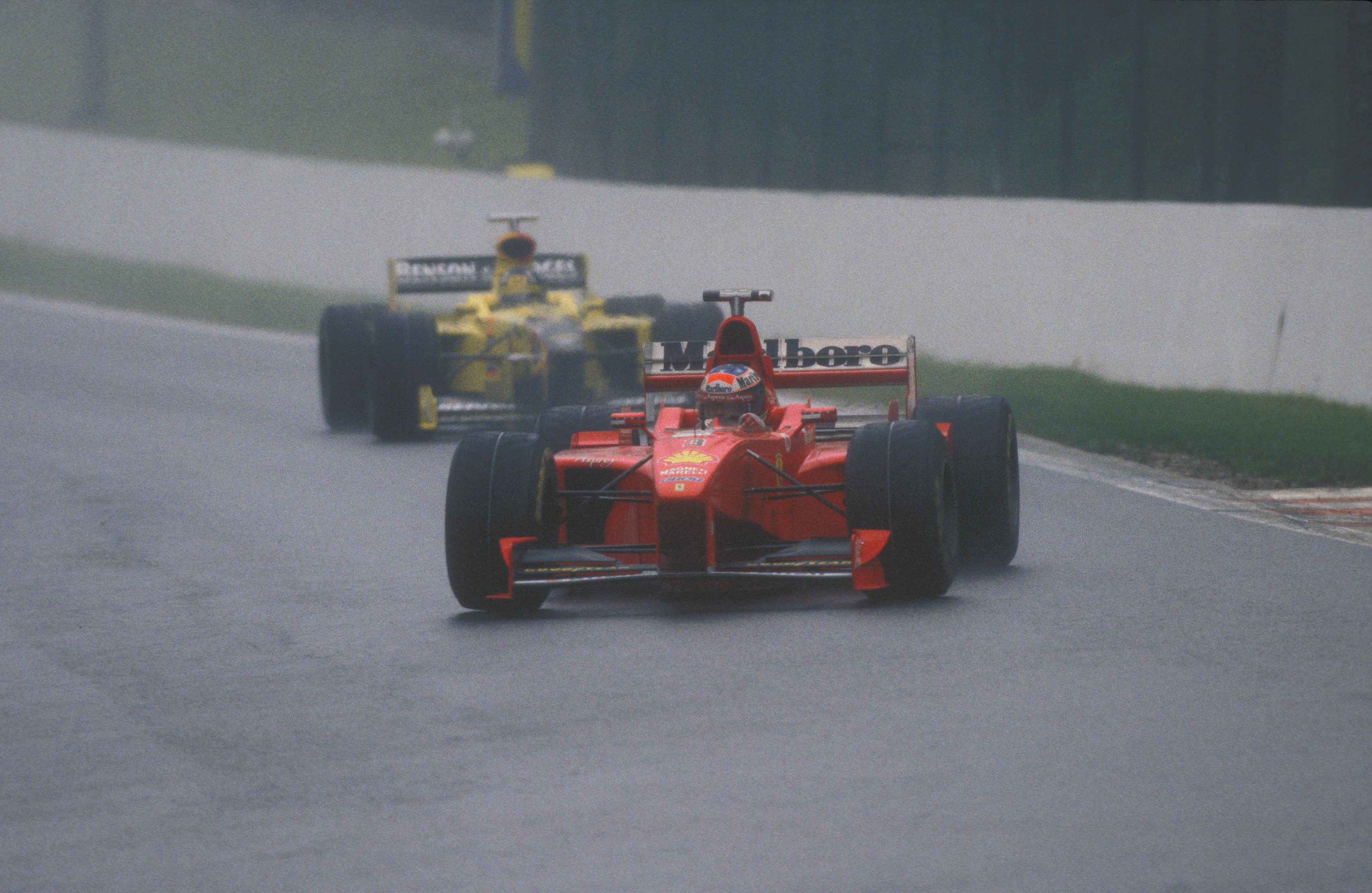
Schumacher was dominating the rain-soaked 1998 Belgian Grand Prix and on course to take the lead of the championship from Mika Hakkinen when he came up to lap David Coulthard with 20 laps to go.
Coulthard slowed to let the Ferrari pass, but he stayed on the racing line. Blinded by the spray, Schumacher smashed into the back of the McLaren.
The two damaged cars limped back to the pits, where a furious Schumacher marched down to the McLaren garage and accused Coulthard of trying to kill him.
“I knew he was angry – his neck was red and his eyes were out on stalks,” Coulthard said in an F1 documentary about Schumacher in 2018. “I should not have lifted on the racing line, because clearly he couldn’t see me. But when I was told he was lapping me, I just wanted to let the leader go.”
Schumacher also fell out with Eddie Jordan post-race, angry at the fact his brother Ralf had been ordered to stay behind his old rival Hill to protect a one-two as Jordan took its first F1 win. In the days following Spa, Michael would pay to terminate Ralf’s deal with Jordan for 1999.
1999 Malaysian GP
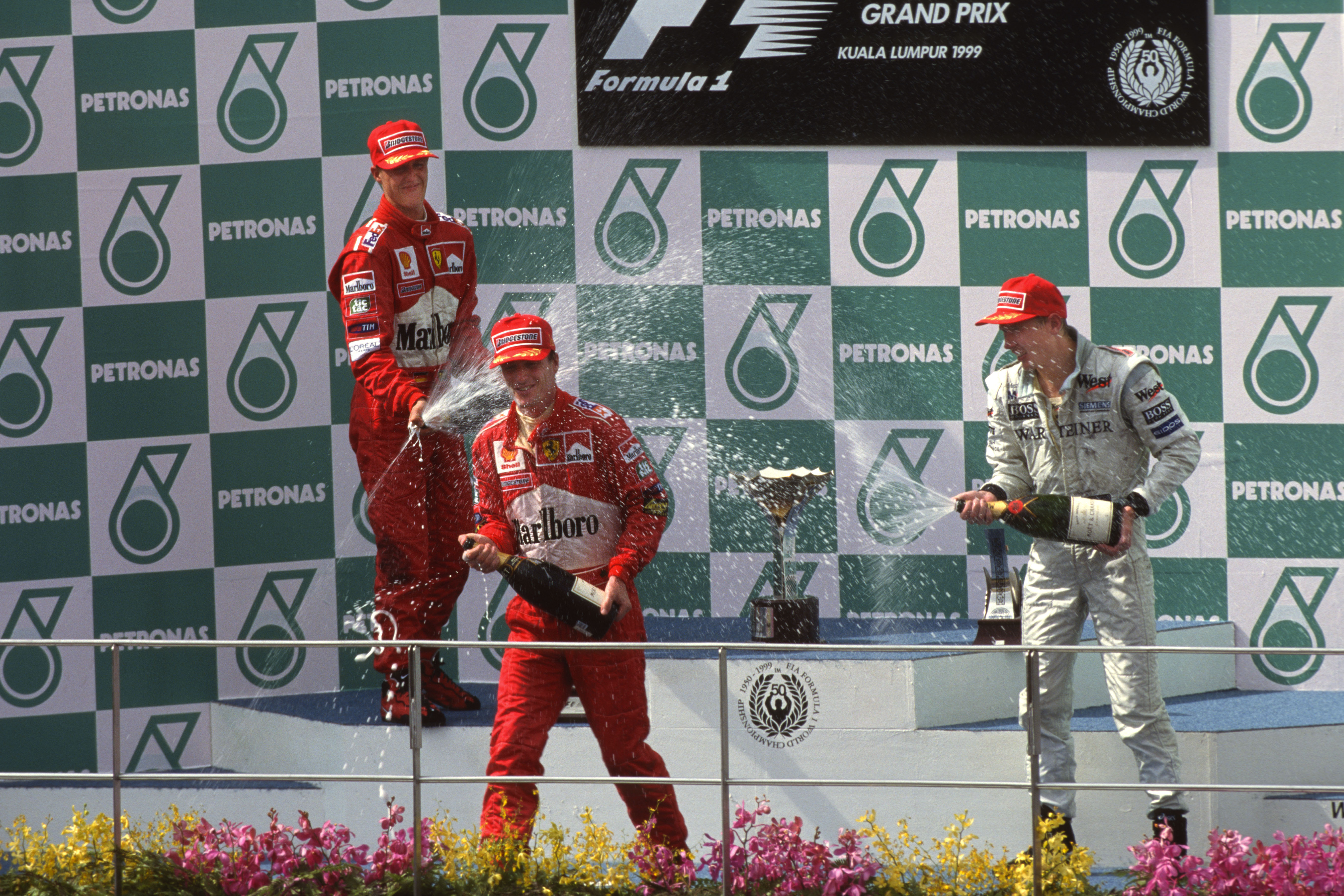
While recovering from his broken leg during 1999, Schumacher made it clear several times that he would not be fit enough to return before the end of the season.
However, following immense pressure from Ferrari president Luca di Montezemolo, Schumacher came back for the final two races to help Eddie Irvine in his unlikely championship fight with Mika Hakkinen.
Once back on track Schumacher blew everyone away at the new Sepang circuit, qualifying nearly a second clear of the field.
In the race he played the number two role to perfection, letting Irvine through then holding up Hakkinen, although the other McLaren of David Coulthard did manage to barge his way through before retiring.
Schumacher ended up back in the lead after the final pitstops, slowing down to let Irvine back through to grab a vital victory.
“This guy is depressing,” Irvine said afterwards. “Not only is he the best number one, he’s the best number two! I just had to be very careful and make sure I didn’t make any mistakes and Michael basically did the hard work for me.”
2002 US GP
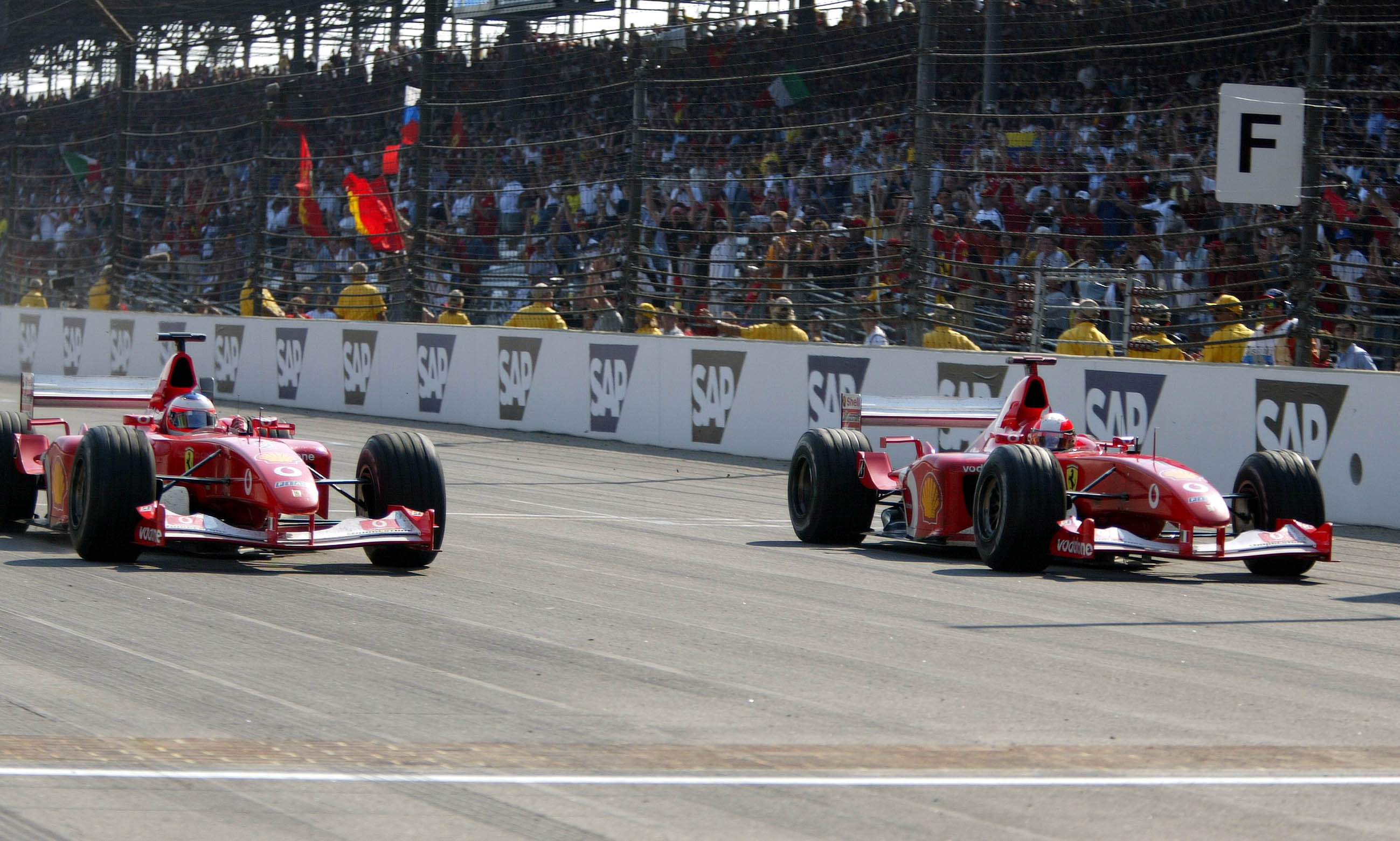
The 2002 US Grand Prix was another Ferrari benefit, and not the first race of that year to end with a bizarre side-by-side finish for Schumacher and Rubens Barrichello.
Schumacher slowed at the end to allow Barrichello to close up, and the drivers approached the famous yard of bricks finish line both looking across at each other. Somewhat unintentionally, Barrichello took the win by 11 thousandths of a second.
“Today I thought it was a good opportunity to go equal over the line,” Schumacher explained afterwards. “We tried, and we failed by a little bit. It was not planned, and we didn’t know who had won until we got out of the cars.”
However, two other theories about this finish later emerged. One was that Schumacher was merely creating a formation finish for the cameras and misjudged the position of the line, while later he said he felt he owed a win to Barrichello as payback for the Austrian Grand Prix earlier that year where the Brazilian was ordered to move over at the finish.
People inside Ferrari suspected that Schumacher had already paid Barrichello back earlier in the season, when he followed him home at the Hungarian Grand Prix despite being much quicker.
Schumacher had a chance to leap Barrichello in the pitstops that day, but mysteriously couldn’t find his usual turn of speed when it counted. “Our priority is to get Rubens second place in the championship,” he said that day.
2004 Monaco GP
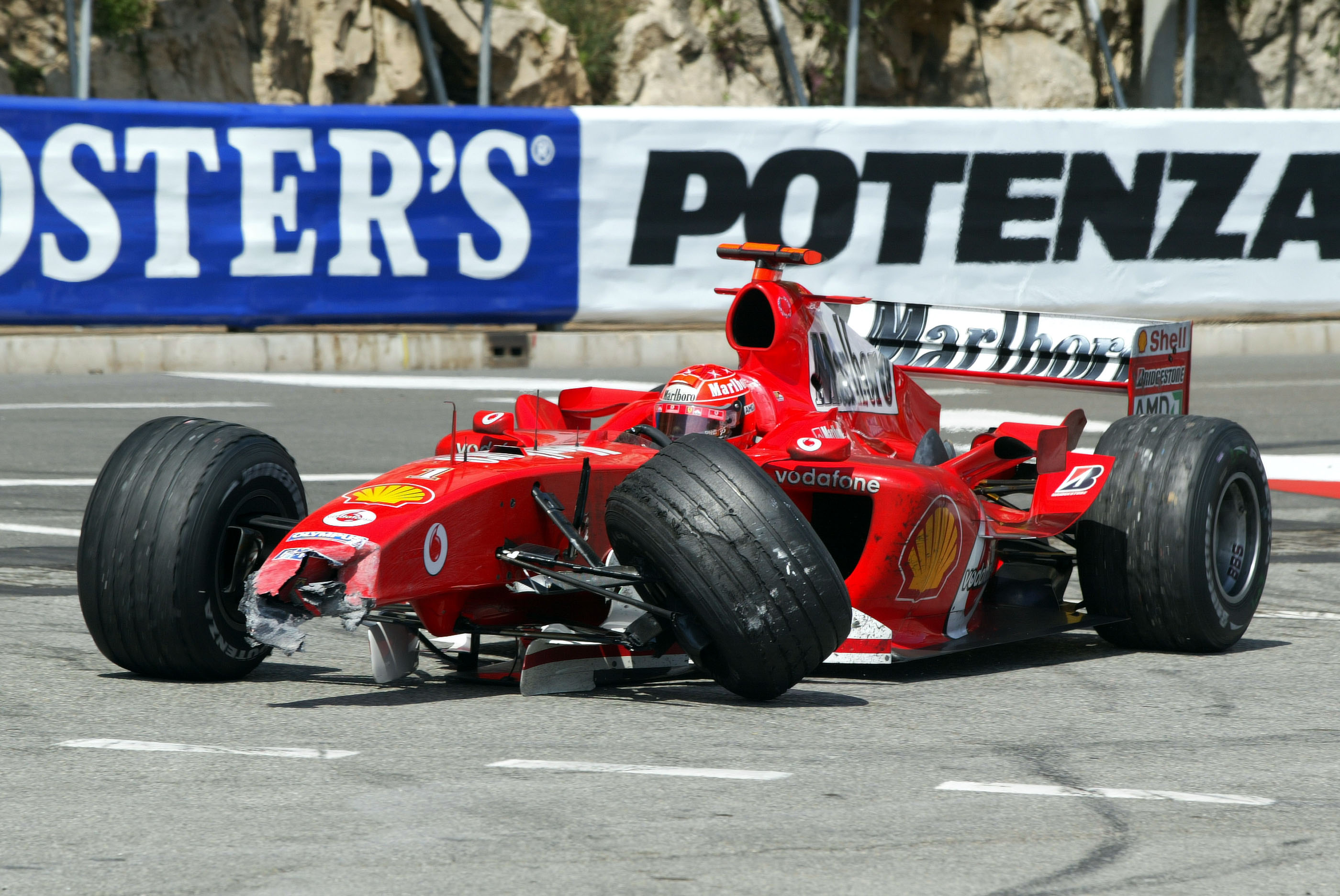
Monaco was already proving to be one of Ferrari’s tougher weekends in 2004 when Schumacher was taken out in a collision with Juan Pablo Montoya behind the safety car.
To make matters worse, Schumacher was in the lead at the time, and Montoya was a lap down.
The incident occurred in the tunnel, as Schumacher braked hard while trying to maintain some heat in his tyres and brakes at low speed. He locked up, but even the puff of smoke from the tyres wasn’t enough warning for Montoya to avoid him.
Schumacher said he had already done the same earlier in the lap, so it shouldn’t have come as a surprise to Montoya, but the German accepted the verdict of the stewards when they decided to take no action against the Williams driver.
Schumacher had only inherited the lead thanks to staying out when others ahead of him pitted. He didn’t think he had an answer for the pace of race winner Jarno Trulli, but he still had plenty of fuel on board, so Ferrari’s plan was for him to try to pull away with clear track on the restart to build a gap before his final stop.
Monaco was the only race out of the first 13 of 2004 that Schumacher didn’t win.
2006 Japanese GP
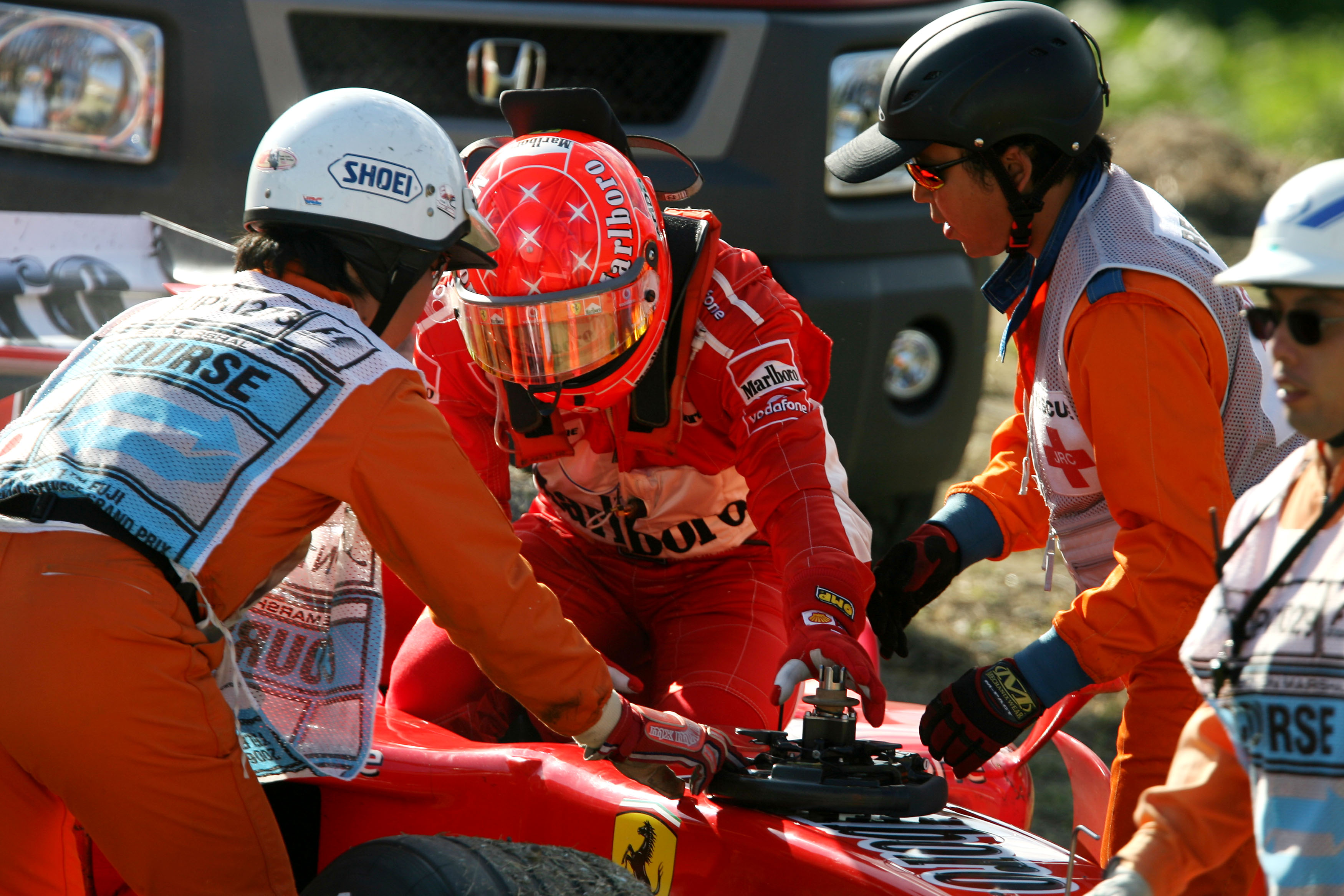
Schumacher and Fernando Alonso went into the penultimate round of 2006 level on points, and the championship appeared to be swinging Schumacher’s way as he led the Japanese Grand Prix after the final pitstops.
But then disaster struck. Schumacher suffered his first Ferrari engine failure since 2000, and his first mechanical failure of any kind since Bahrain 2005, handing the race and effectively the title to Alonso.
Alonso initially thought the car coming to a halt in front of him was a Spyker. Then when he saw it was Schumacher, he repeatedly punched the air as he sped by.
“I had so many problems in the last few races,” said Alonso. “Sometimes I need to recover these unlucky moments. I didn’t believe what I was seeing, it’s not often you see a mechanical problem for a Ferrari.”
The race not only cost Schumacher win #92, but also any realistic shot at an eighth world title.
2012 Monaco GP
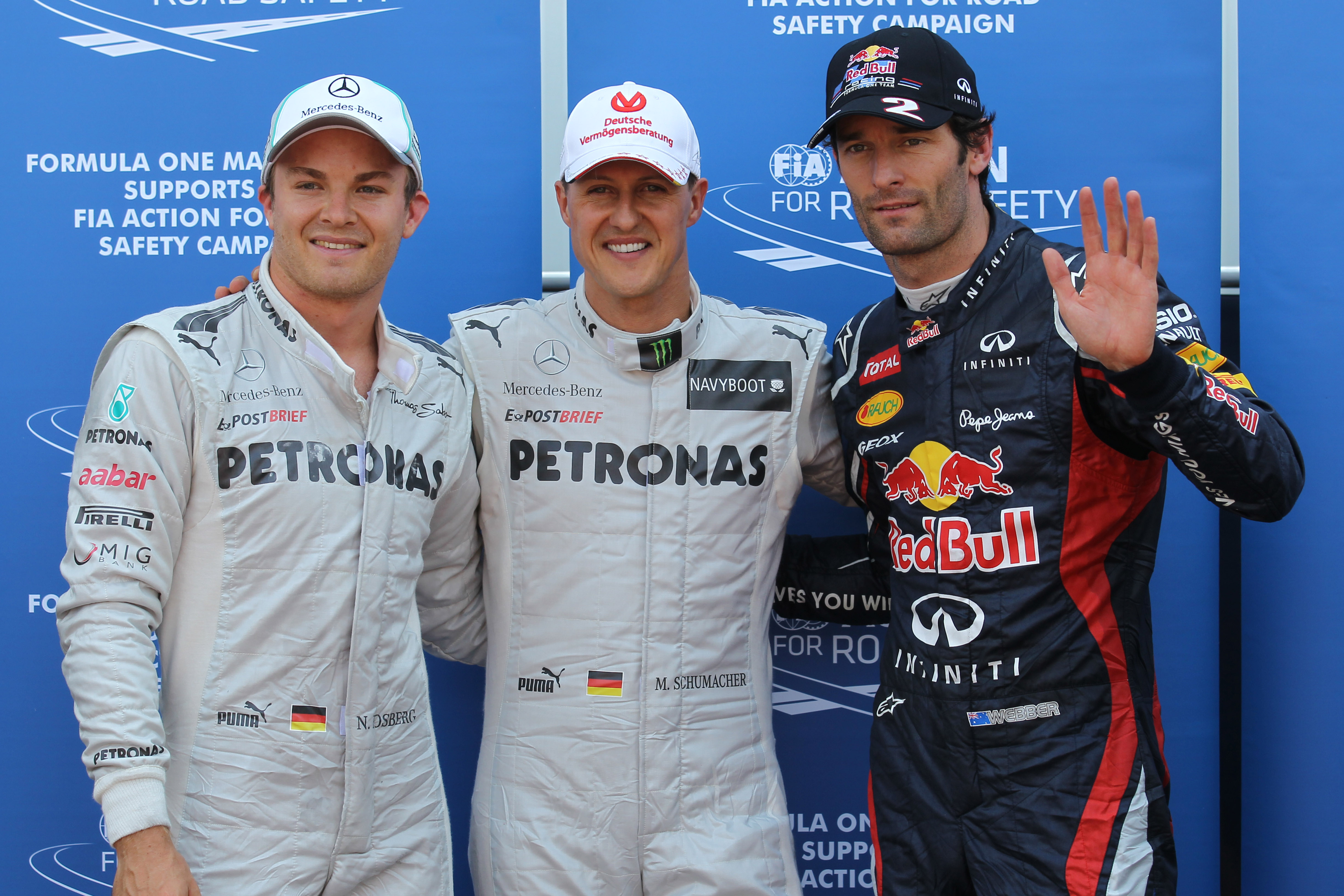
There weren’t many high points from Schumacher’s comeback with Mercedes, and during those three years in silver he only led three laps.
But the one time he was truly able to show a touch of the old magic could have led to a victory – had he not rear-ended Bruno Senna in the 2012 Spanish Grand Prix.
That clumsy accident resulted in Schumacher taking a grid penalty in Monaco, where he then set the fastest time in qualifying.
Schumacher still referred to it as a pole position after the session, even though he’d have to start the race from sixth.
Perhaps the grid penalty saved Schumacher from much greater heartbreak the following day. Had he started from the front there’s every chance he would have been leading the race when his car failed on him 15 laps from the end.






